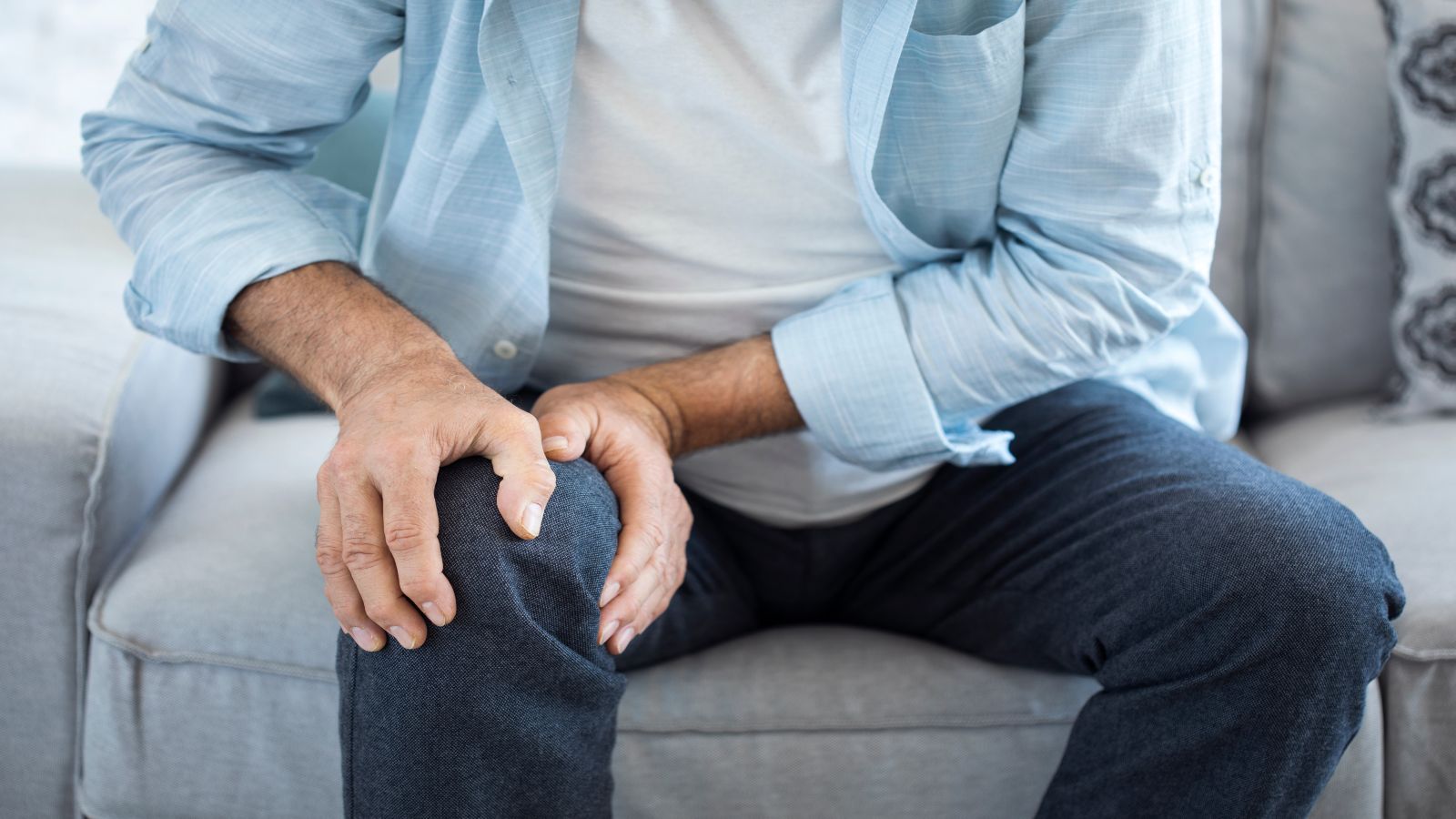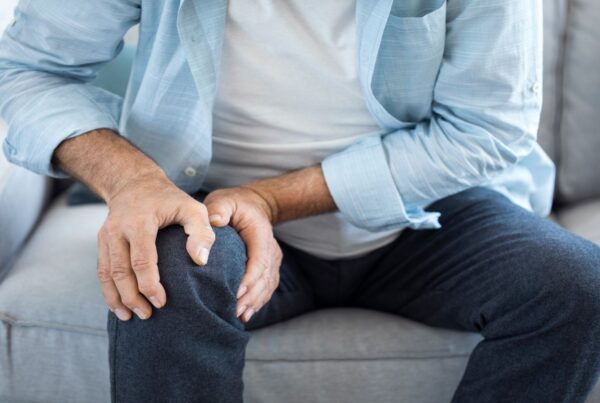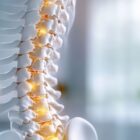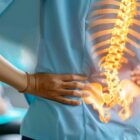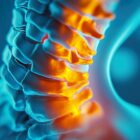If you’re dealing with leg pain that seems to come from nowhere, you might be surprised to learn that the problem could be in your spine. Lumbar spinal stenosis is a common condition that can cause significant leg pain and weakness. Understanding how spinal stenosis affects your legs can help you recognize the symptoms and seek proper treatment.
Spinal Stenosis 101: When Your Spine Gets Too Tight
Spinal stenosis happens when the spaces in your spine become narrow. This narrowing puts pressure on the nerves that travel through your spine. When stenosis affects the lower back (lumbar spine), it often causes problems in your legs.
The most common type of leg symptoms is lumbar spinal stenosis. This occurs when the spinal canal in your lower back becomes too tight. The nerves that control your legs pass through this area, so any pressure on these nerves can cause leg symptoms.
What Your Legs Are Really Trying to Tell You
Yes, spinal stenosis can cause leg pain. In fact, leg pain is one of the most common symptoms of lumbar spinal stenosis. When the narrowed spaces in your spine press on nerves, this pressure can travel down to your legs.
Many people with lumbar stenosis experience:
- Pain that starts in the lower back and travels down one or both legs
- Aching or burning sensations in the legs
- Pain that gets worse when walking or standing
- Relief when sitting down or leaning forward
The connection between spinal stenosis and leg pain happens because the nerves in your lower spine control feeling and movement in your legs. When these nerves are compressed, they send pain signals down to your legs.
How Does Spinal Stenosis Affect the Legs?
Spinal stenosis affects your legs by putting pressure on the nerves that control them. Here’s what happens:
Nerve Compression
When your spinal canal becomes narrow, it squeezes the nerves that branch out to your legs. This compression can cause various symptoms in your legs, even though the actual problem is in your spine.
Blood Flow Issues
Stenosis can also affect blood flow to the nerves. When you walk or stand, your spine extends slightly, which can further narrow the already tight spaces and reduce blood flow to the nerves.
Muscle Weakness
Over time, the compressed nerves may not work as well. This can lead to weakness in your leg muscles, making it harder to walk or climb stairs.
It's time to get back
to doing what you love.
What Does Leg Pain from Spinal Stenosis Feel Like?
Leg pain from spinal stenosis can feel different for different people. Common descriptions include:
Aching and Burning
Many people describe the pain as a deep ache or burning sensation that travels down one or both legs. This pain often starts in the buttocks and moves down the back or side of the leg.
Cramping
Some people experience cramping in their calves or thighs. This cramping can be similar to what you might feel after intense exercise.
Heaviness
Your legs might feel heavy or tired, especially when walking. Some people say their legs feel like they’re made of lead.
Numbness and Tingling
You might experience numbness or tingling in your legs, feet, or toes. This can feel like pins and needles or like your leg is “falling asleep.”
Sharp, Shooting Pain
Sometimes the pain can be sharp and shooting, traveling quickly from your back down to your leg or foot.
The pain often gets worse when you:
- Walk or stand for long periods
- Walk downhill or on flat surfaces
- Extend or arch your back
The pain typically improves when you:
- Sit down
- Lean forward (like on a shopping cart)
- Walk uphill
- Flex your spine forward
Understanding Leg Weakness from Spinal Stenosis
Leg weakness is another common symptom of spinal stenosis. This weakness happens because the compressed nerves can’t send proper signals to your leg muscles.
Signs of Leg Weakness
You might notice leg weakness if you:
- Have trouble lifting your foot or toes
- Feel unsteady when walking
- Need to hold onto walls or furniture for support
- Have difficulty climbing stairs
- Feel like your legs might give out
Weakness in One or Both Legs
Spinal stenosis can cause weakness in one leg or both legs, depending on which nerves are affected. If the stenosis is in the center of your spine, it might affect both legs. If it’s more to one side, it might mainly affect one leg.
Progressive Weakness
Leg weakness from spinal stenosis often gets worse over time if left untreated. What starts as mild weakness can progress to significant difficulty walking or standing.
Can Spinal Stenosis Affect Both Legs?
Yes, spinal stenosis can definitely affect both legs. Whether stenosis affects one leg or both depends on where the narrowing occurs in your spine.
Bilateral Leg Pain
When stenosis affects the central part of your spinal canal, it can put pressure on nerves that go to both legs. This can cause:
- Pain in both legs
- Weakness in both legs
- Numbness or tingling in both feet
One Leg vs. Both Legs
Some people experience symptoms in just one leg, while others have problems in both legs. The pattern depends on:
- The location of the stenosis
- How severe the narrowing is
- Which specific nerves are affected
Symptoms Can Vary
Even when both legs are affected, the symptoms might not be exactly the same in each leg. One leg might hurt more than the other, or you might have weakness in one leg and numbness in the other.
Treatment Options for Spinal Stenosis Leg Pain
There are several treatment options available for spinal stenosis leg pain, ranging from conservative approaches to surgical procedures.
Conservative Treatments
Physical Therapy
Physical therapy can help strengthen your back and leg muscles, improve your flexibility, and teach you exercises that may reduce your symptoms.
Medications
Anti-inflammatory medications can help reduce swelling around the compressed nerves. Your doctor might also prescribe other medications to help manage nerve pain.
Injections
Steroid injections into your spine can help reduce inflammation and provide temporary relief from leg pain and weakness.
Activity Modification
Learning to modify your activities can help manage symptoms. This might include using a shopping cart when walking or taking frequent breaks.
Surgical Options
When conservative treatments don’t provide enough relief, surgery might be recommended.
Lumbar Decompression Surgery
This procedure involves removing tissue that’s pressing on the nerves in your spine. The goal is to create more space for the nerves and relieve pressure.
Minimally Invasive Options
Many decompression procedures can now be done using minimally invasive techniques. These approaches typically involve:
- Smaller incisions
- Less muscle damage
- Faster recovery times
- Less post-operative pain
Spinal Fusion
In some cases, spinal fusion might be recommended along with decompression. This procedure stabilizes the spine and can help prevent future problems.
Benefits of Treatment
Proper treatment for spinal stenosis can help:
- Reduce or eliminate leg pain
- Improve leg strength and function
- Increase your walking distance
- Improve your overall quality of life
- Help you return to activities you enjoy
When to See a Spine Specialist
You should consider seeing a spine specialist if you experience:
Persistent Symptoms
- Leg pain that lasts more than a few weeks
- Leg weakness that interferes with daily activities
- Numbness or tingling that doesn’t go away
Progressive Symptoms
- Symptoms that are getting worse over time
- Difficulty walking longer distances
- Increasing weakness in your legs
Impact on Daily Life
- Trouble with work or household activities
- Difficulty enjoying hobbies or exercise
- Problems with balance or walking
Red Flag Symptoms
Seek immediate medical attention if you experience:
- Loss of bladder or bowel control
- Sudden, severe weakness in both legs
- Complete numbness in your legs or feet
Schedule a Consultation to Learn More About Treatment Options
Living with leg pain and weakness from spinal stenosis can significantly impact your quality of life. The good news is that effective treatments are available to help relieve your symptoms and get you back to the activities you enjoy.
At Neurosurgeons of New Jersey, our spine specialists have extensive experience treating lumbar spinal stenosis and its effects on leg function. We offer both conservative and surgical treatment options, including minimally invasive procedures that can provide excellent results with faster recovery times.
Don’t let spinal stenosis leg pain control your life. Our team is here to help you understand your condition and explore the treatment options that are right for you. Contact Neurosurgeons of New Jersey today to schedule a consultation and take the first step toward relief.
Dr. Anthony Conte, MD
Dr. David Estin, MD, FACS
Dr. Christopher Gillis, MD, FRCSC, FAANS
Dr. Jonathan H. Lustgarten, MD
Dr. Ty J. Olson, MD, FACS

About Eatontown
Our team of board certified physicians, located in Eatontown, New Jersey, are dedicated to bringing you the latest developments and treatment options for spinal surgery. We strive to produce the most clarified & clear content to help you make informed decisions on your medical journey. The road to feeling like your true self should not feel lonely- Let us help you. Please call us to schedule a consultation and speak to one of our team members.

